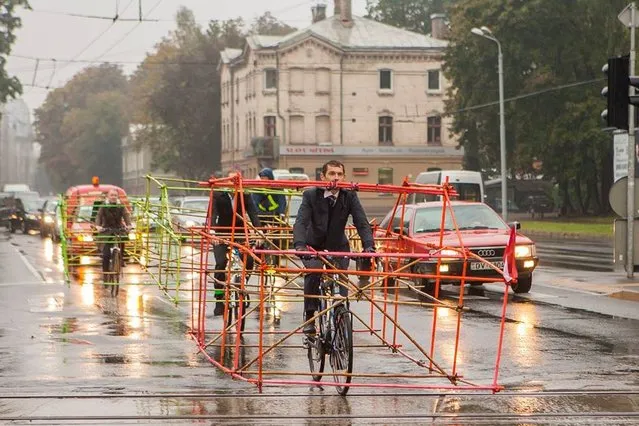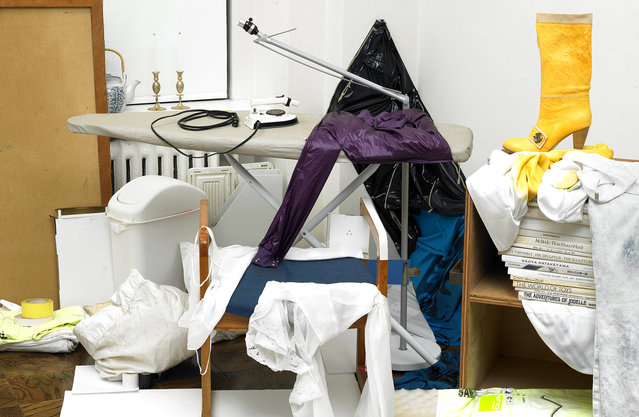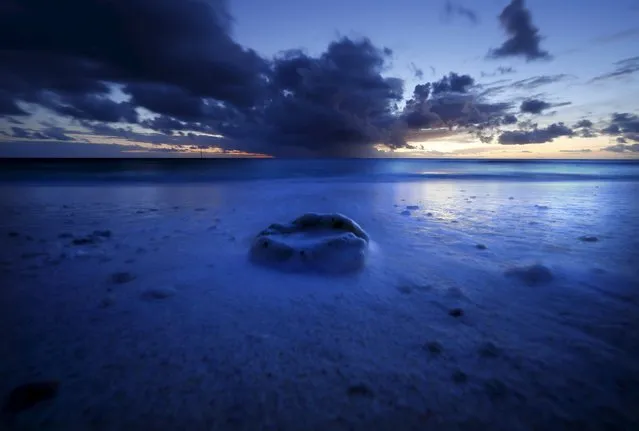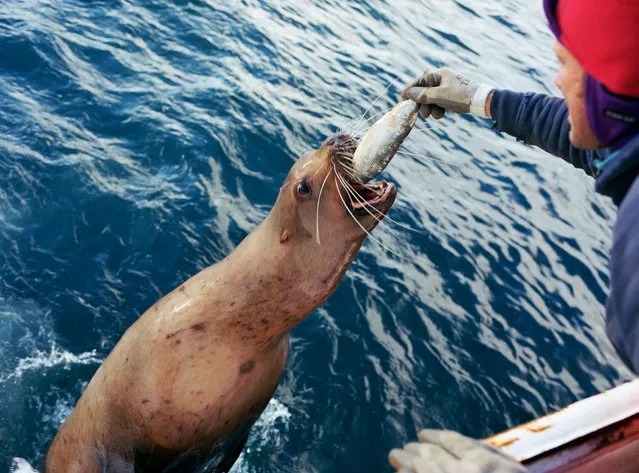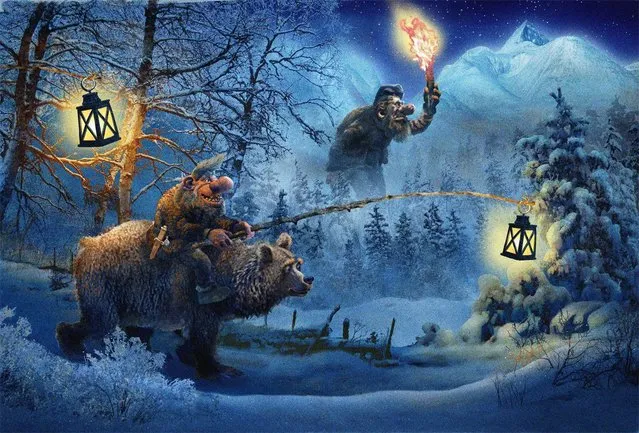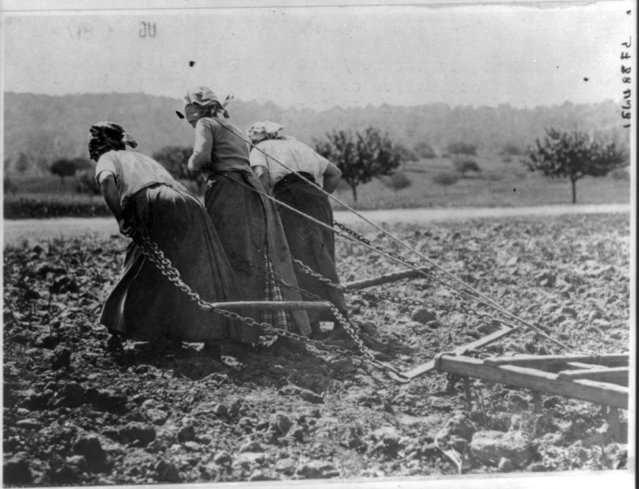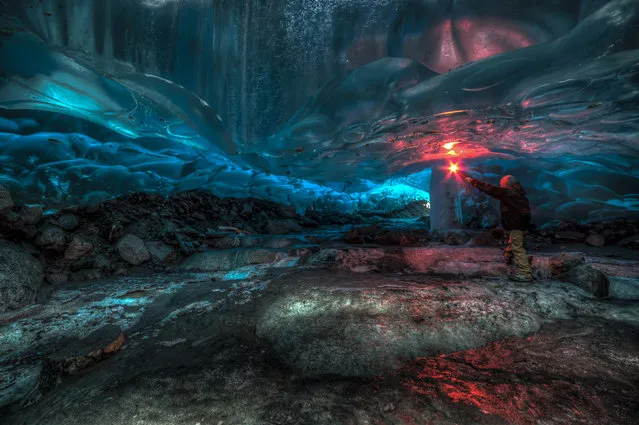
This photographer is walking on thin ice after taking stunning photographs inside an Alaskan ice cave that could collapse at any moment. With it's dazzling turquoise walls and and huge open spaces, it's hard to imagine that this incredible frozen cavern was only formed at the beginning of 2012. But despite it's seemingly mystical allure, the fascinating natural phenomena is at risk of collapsing in on itself without warning. (Photo by Ron Gile/Caters News)
06 Oct 2014 08:44:00,post received
0 comments

